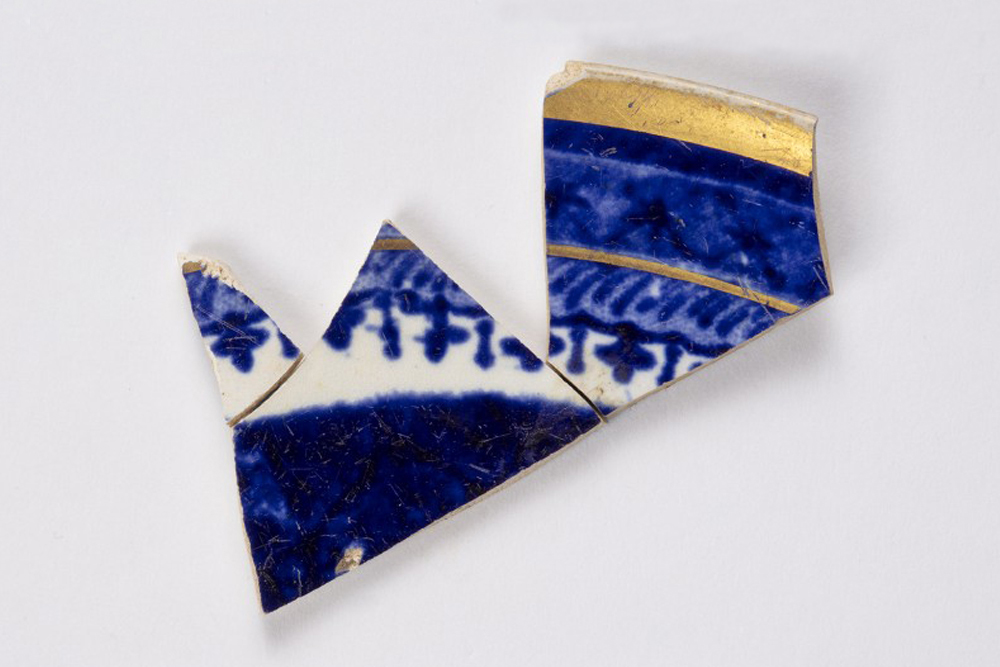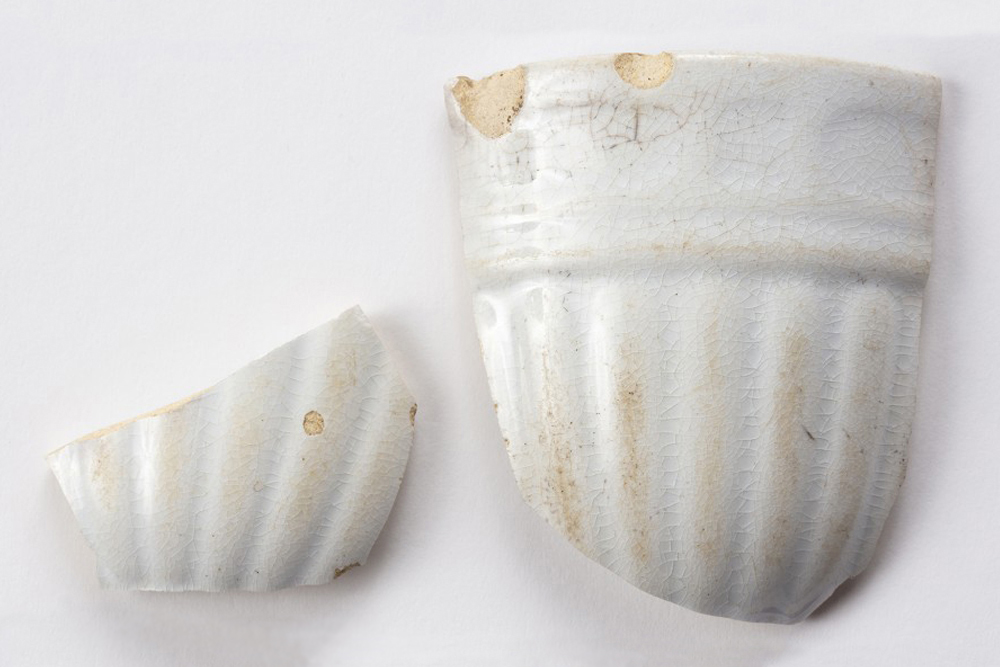Teacup
Drinking tea has been an important part of Chinese culture for thousands of years; their ancient myths allude to emperors drinking boiling water with a tea leaf. Tea continued spreading throughout Asia, but it hadn’t spread to Europe until Portuguese and Dutch traders brought tea to their respective countries in the mid-sixteenth century. In the seventeenth century, China and Russia developed safe trading routes and imported tea there, and this led to Russians also drinking tea at parties. Tea came to England during the latter half of the seventeenth century due to the marriage of King Charles II to the Portuguese princess Catherine. The princess’s tea-drinking habits encouraged other British women to also drink tea, leading to the rise of trading tea with China. This led to the formation of tea gardens throughout England, where people would go to talk and drink tea. Later, during the 1840s, tea gardens fell out of popularity and tea-drinking became an at-home activity (Tea Story). Tea-drinking at homes would often take place in the afternoon, usually serving as a “very light” meal before evening dinner (Figure 1). Friends and family would meet at these events to socialize, just as they once did in tea gardens. However, the main difference between tea gardens and “at-home” tea-drinking events seems to be that drinking tea socially became not only for the wealthy, but for everyone.

Figure 1: Women drinking tea, Five O’Clock Tea by David Comba Adamson
History of White Granite (Ironstone)
To drink tea, however, people needed teacups. Porcelain was great at keeping liquids warm (Mugs), but it was very expensive for the average person living in the United States at the time. This is where white granite comes in. White granite, which comes from ironstone, was first produced in Staffordshire, England as a cheaper alternative to porcelain in 1812 (ANTH 313), but did not become popular in the United States until the 1840s (Maryland Archaeological Conservation Lab 2015). White granite is known for its durability, despite being cheaper than porcelain, which is part of the reason why it was very popular in the United States throughout the nineteenth century. In 1850 in New York, white granite was worth two dollars, while most other ceramics cost less, with the exception of items with printed or flown decorations (Wall 1991, 75). The material, despite being more expensive than other earthenwares, was still produced consistently and highly coveted by consumers. Decorating and etiquette guides advised women to purchase these ceramics over others. Archaeological excavations elsewhere in New York City and in other American cities show that middle-class white families avidly purchased these kinds of ceramics (Fitts 1999). For example, at 25 Barrow Street, there were about six white granite/ironstone objects, compared to the seven of all other types of ceramics combined. At 50 Washington Sq. South, there were nineteen objects made of white granite/ironstone compared to fourteen of the rest of the objects. This means that 46% of the objects at 25 Barrow Street were made of white granite and 58% of the objects on 50 Washington Sq. South were made of white granite, making it the most common type of ceramic (Wall 1991, 75). In the 1850s, white granite became the dominant ceramic for tableware throughout the United States after only being introduced to the country in the 1840s.
Use of the Teacup in Seneca Village
The “Prize Puritan” design is the name given to this cup’s design in a catalog from T. J. & J. Mayer, a group of brothers who were potters from Staffordshire, England, in 1851 (White Ironstone Notes). Its design consists of ribbed motifs, which became very popular towards the latter quarter of the nineteenth century (Figure 2). This design actually won a “prize medal” at the 1851 London Crystal Palace Exposition, which gave the cup a lot of value. Ceramics historian L. Jewitt noted that the cup won its prize medal for being very durable when cooking tea, but for also having a light and simple design, which went well with other utensils and plates (White Ironstone Notes).
Prize Puritan cups are typically found on the East Coast and are rare to find (White Ironstone Notes), which alludes to the fact that these specific cups may have been expensive compared to other white granite cups. However, based on what we know, Seneca Villagers had access to many luxury goods, meaning the purchase of these cups was certainly possible. We also know that the white granite/ironstone tablewares were used primarily for family settings, further alluding to the fact that the cups were used during teatime for these families. Tea drinking helped the communities interact and socialize after a day filled with work or other activities. Drinking tea is one of the main ways the people in Seneca Village could socialize besides going to church or work.

Figure 2: Prize Puritan Teacup, T. J. & J. Mayer
Works Cited
“ANTH 313 – Period VI: 1820s to 1900s.” n.d. Nautical Archaeology Program. nautarch.tamu.edu/class/313/ceramics/period-6.htm.
Fitts, Robert K. 1999. “The Archaeology of Middle-Class Domesticity and Gentility in Victorian Brooklyn.” Historical Archaeology 33, no. 1: 39-62.
“Porcelain Mugs vs. Ceramic Mugs Which Is Better?” 10 Apr, 2013. Mugs. https://www.mugs.cz/en/news/links/porcelain-mugs-vs-ceramic-mugs-which-is-better.html.
“Prize Puritan/Prize Medal.” 2003, winter. White Ironstone Notes, 9, no. 3: 1, 4-6.
“Tea Story – The History of Afternoon Tea.” n.d. Destination Tea. destinationtea.com/teastory.
Wall, Diana Di Zerega. 1991. “New Sacred Dinners and Secular Teas: Constructing Domesticity in Mid-19th-Century New York.” Historical Archaeology 25, no. 4: 69–81.
“White Granite (aka Ironstone).” 2015. Maryland Archaeological Conservation Lab. www.apps.jefpat.maryland.gov/diagnostic/Post-Colonial%20Ceramics/White%20Granite/index-whitegranite.html.




